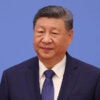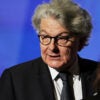As expected, President Obama touched on one of his favorite subjects in his lengthy address to the United Nations General Assembly today: nuclear disarmament. He claimed that:
As we pursue the world’s most dangerous extremists, we’re also denying them the world’s most dangerous weapons, and pursuing the peace and security of a world without nuclear weapons. Earlier this year, 47 nations embraced a work-plan to secure all vulnerable nuclear materials within four years. We have joined with Russia to sign the most comprehensive arms control treaty in decades. We have reduced the role of nuclear weapons in our security strategy. And here, at the United Nations, we came together to strengthen the Nuclear Non-Proliferation Treaty.
Like most of the rest of the President’s speech, this portion of it checks the expected boxes: a world without nuclear weapons (which will not happen, and which would endanger the security of the U.S. and its allies if it did); the security of nuclear materials (clearly an important goal, but one that cannot be achieved without cooperation from bad actors like Iran and North Korea); the New START Treaty (which among its other flaws limits U.S. missile defense options); a new national security strategy (which fails to make a clear commitment to defend the U.S. and its allies); and the NPT (where the U.S. has shot itself in the foot by assenting to the theory that, if non-proliferation fails, the U.S. must respond by disarming further).
The underlying assumption of the President’s statement is that the General Assembly in particular, and the United Nations in general, plays a central role in arms control and disarmament. This is not true. The Security Council has an important, but qualified and limited, role to play in pursuit of international peace and security.
But the United Nations as a whole, as Heritage Foundation analyst Baker Spring points out, is profoundly handicapped by its assumption of moral equivalence between democracies and dictatorships, by its refusal to fully acknowledge the inherent right of self-defense, by its insistence on negotiating unverifiable and unenforceable treaties, and by its desire to supplant the authority of sovereign nation states with that of U.N. bureaucrats and unaccountable NGOs.
If the President wants to move towards reducing the undoubted dangers that nuclear weapons pose to the security of the U.S. and its allies, the place to start is not the United States, or Britain or France or Israel—it is with understanding where, and why, nonproliferation has worked in the past.
We know of at least 15 nations that have abandoned nuclear programs. Of these, four—Japan, Germany, Libya, and Iraq—were terminated by the American armed forces, or the implicit threat that they would be used. Of the remaining 11, all except Sweden and Algeria ended their programs when they democratized in the 1980s, or when they achieved independence from the USSR in the 1990s. As the accompanying chart shows, the fall of the USSR was nonproliferation’s greatest victory.
By contrast, the nuclear programs of most concern today are in utterly tyrannical North Korea, in theocratic Iran, in Iran’s satellite Syria (where an Israeli attack destroyed a secret facility in 2007), and in Pakistan, which has an on-again, off-again commitment to democracy. If the President wants to advance the cause of nonproliferation, as he should seek to do, he will not do it at the U.N., which is institutionally indifferent to democracy.
Rather, the President will have to do it the way his predecessors, and in particular Ronald Reagan, did it: by sustaining the strength of the American armed forces to deter attacks and respond to them, and by promoting democracy in the world’s undemocratic regimes. That will be a lot harder than negotiating one-sided treaties with Russia, or making speeches at the U.N., but it is the only approach that recognizes that the problem is not nuclear weapons—it is the undemocratic states that have them. And that is why it is the only approach that has worked in the past.

































4 Replies to “Democracy, Not the U.N., Brings Nuclear Disarmament”